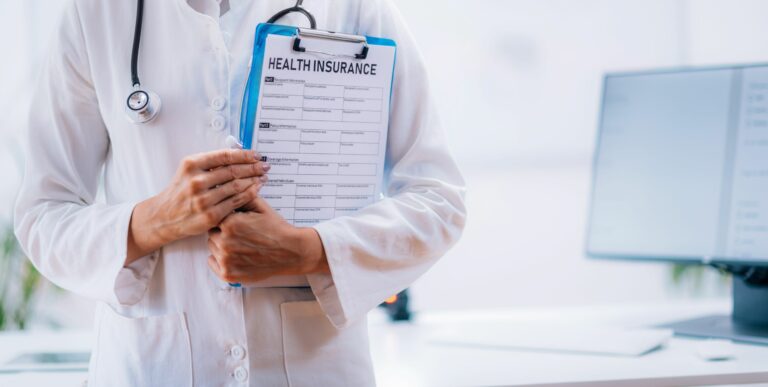Remote patient monitoring (RPM) is rapidly establishing itself as a highly effective tool for managing chronic diseases. RPM is the collection and transfer of patient health data to providers outside of the traditional care setting. RPM utilizes connected devices to capture and transmit vital signs such as blood pressure, heart rate, and oxygen saturation levels to the provider. This captured data is useful for tracking patient health without the need for regular visits and examinations.
Today, RPMs are equipped with artificial intelligence (AI) to provide a better quality of care. AI technology gives machines the ability to demonstrate human-like characteristics such as reasoning, learning, planning, and creativity.
This article will discuss 6 AI healthcare solutions used for RPM.
1. Facial Recognition for RPM
Facial recognition is a technology used to identify a person based on their specific facial features like bone structure and skin texture. Face recognition is usually used for security. Law enforcement uses this technology to detect and identify individuals by scanning anyone entering a facility. The scanned face is compared to a list of individuals who may have criminal records or those that are banned from the facility. Aside from security, face recognition is also used in the healthcare industry.
Face recognition in telemedicine is used to track vital signs by simply scanning one’s face in front of their laptop or smartphone’s camera. Face recognition as used in RPM is contact-free and non-invasive, allowing patients to be diagnosed and treated without the necessity of frequent clinic visits or hospital admissions.
Further, face recognition is used to detect emotions during mental health therapy. This technology is used to interpret the patient’s inner sentiments by tracking facial landmarks and cues allowing providers to truly understand their patients. With this, patients can receive individualized, patient-centered, efficient, and timely care.
2. Remote Consultation using Computer Vision (CV)
CV is a subfield of AI that enables computers and systems to extract meaningful information from digital photos, videos, and other visual inputs and to act or make recommendations in response to that information. If AI enables computers to think, CV enables computers to see, watch, and comprehend.
From diagnosing skin-related diseases, including skin cancer, to interpreting ECG, CV is radically improving the healthcare industry with its capabilities. Significant advancements have occurred in the field of breast cancer screening as well. CV can be used to analyze mammography images in order to reliably identify breast cancers. Additionally, lung CT scan images processed using CV algorithms have demonstrated promise for detecting lung cancer at an early stage.
In RPM, providers started using CV to diagnose and treat skin-related diseases without in-person consultation. In fact, CV can diagnose skin-related diseases rapidly and accurately, allowing providers to accommodate more patients.
3. Natural Language Processing (NLP) for Remote Diagnosis and Preventive Treatment
NLP technology gives computers the ability to understand human speech or text communications. If CV allows computers to see and comprehend, NLP enables computers to listen.
One famous app that uses NLP is a chatbot that asks the same questions as a doctor would during an in-person checkup. The app does not make an official diagnosis; instead, it uses voice and language processing to extract information such as signs and symptoms of the patient. The chatbot then sends this extracted information to the doctor, who makes a diagnosis and prepares for treatments based on the received processed data.
With NLP, patients can be monitored remotely. Remote diagnosis and treatment are also possible.
4. RPM Utilizing Sound Analysis
Sound or audio analysis is a broad field of AI that covers automated speech recognition (ASR), digital signal processing, music classification, tagging, and production, and other related technologies.
Most disorders associated with an obstructed or restricted respiratory system can be identified by the sounds produced when breathing. These include COPD and pneumonia. Anomalies of the airway may result in strange breathing noises. This could include the lack of sounds or the addition of odd ones. The latter type of sound is referred to as adventitious. Auscultation is a technique in which an expert uses a stethoscope to listen for irregularities in sounds and utilizes this information to make a diagnosis. However, accurate detection of these noises requires both the presence and degree of knowledge of an “expert.” Sound analysis can be useful in detecting and monitoring disorders such as asthma, chronic obstructive pulmonary disease (COPD), and pneumonia. RPM providers are still exploring on this area.
RPM can utilize ECG at-home devices that use a single lead ECG and a deep neural network model trained on various datasets of heart readings. In addition to ECG, sound analysis may be used to examine heart health as well as analyze the heartbeat. Since it coincides with the cardiac beat, sound analysis can identify the vibration of tissue generated by turbulent blood flow, known as a murmur, which is difficult to detect with the human ear.
5. AI-enabled Wearables for Connected Health Monitoring
Wearables are healthcare devices that users can wear. These electronic devices are designed to extract data about the users with sensors for the purpose of monitoring their health conditions. The data extracted includes heart rate, respiratory rate, blood pressure, body temperature, and so much more.
Wearables are usually used for monitoring patients remotely. Traditionally, a wearable would collect and transmit data to the provider. The provider views and examines the collected data and warns the patient in case of an abnormal result. However, with AI-enabled wearables, the device will immediately warn the user if they should medical attention, like when the user’s heart is beating too fast or too slow. This allows the user to take the necessary precautions before their condition worsens.
6. Predictive Analytics for RPM
Predictive analytics in healthcare is the analysis of current and historical healthcare data that enables healthcare practitioners to identify potential possibilities to improve operational and clinical decision-making, forecast trends, and even manage disease transmission.
With the patients’ data collected through RPM, physicians may effectively manage rising-risk and at-risk groups, prioritize patients with immediate care needs, and reduce avoidable hospitalizations, especially those with chronic diseases.
Takeaway
RPM and AI have the potential to offer proactive care and the ability to anticipate adverse outcomes without the need for frequent visits to the doctor.
It can also assist in better allocation of limited healthcare resources by focusing on the people who have more urgent conditions. Effective implementations of RPM and AI healthcare solutions will continue to drive fundamental improvements in the delivery of health-care services.








